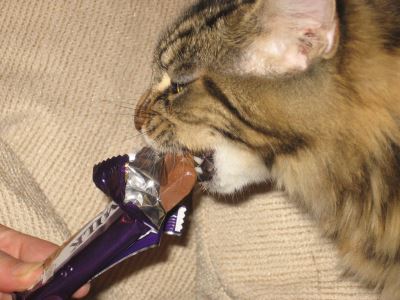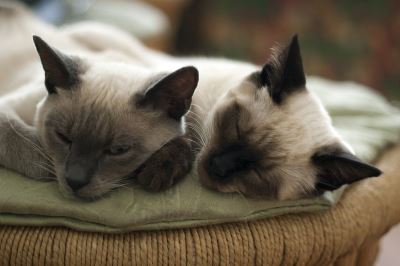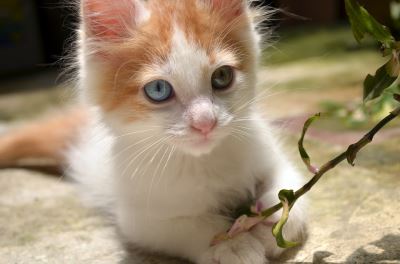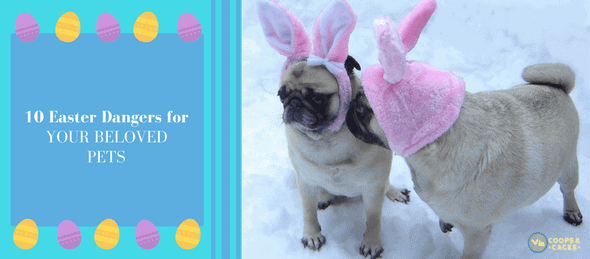Everything about Easter is just so exciting. Not only do you get to spend time with your loved ones; you also get to indulge yourself in sweet treats. Sad to say, this exciting holiday may pose threats to pets. From plastic objects, synthetic grass, poisonous plants, chocolates, candy wrappers, and poisonous plants, we’ll expose some of the hidden dangers of Easter for your pets. See below.



1. Chocolates
Caffeine and theobromine are found in chocolates. These two chemicals make chocolates toxic to our canine buddies. Although cats may also be affected, they normally avoid sweet foods. According to experts, dark, unsweetened, and bitter chocolates are the most toxic because they are packed with so much amounts of caffeine and theobromine.
Vomiting, hyperactivity, abnormal heart rates, seizures, and diarrhea are primary signs that your pets have ingested chocolates. If you suspect they have consumed chocolates, it calls for an emergency. You should take your pets to their vet right away.
2. Easter Basket Fillers
Foil wrappings, plastic eggs, and other paper fillers make Easter baskets look fuller. However, they pose a potential threat to your pets. These fillers are too attractive to pets, therefore they would want to chew on them and swallow them. If that happens, your pet’s digestive tract might be obstructed. Often times, they have to be removed through surgeries to save your pet’s life.
3. Macadamia Nuts
Yes, macadamia nuts are toxic to canines, but they are not usually fatal. If your pet has accidentally ingested these nuts, he will show signs like depression, wobbliness, lethargy, joint stiffness, and tremors. Contact his vet right away if you see any of these signs.
4. Alcoholic Drinks
Because of the small size of your pets, alcoholic beverages can quickly enter their bloodstream. And if that is the case, there might be a sudden drop in their blood sugar, which may result in respiratory failure and seizures. So, as much as possible, if you are going to host an Easter party, keep alcoholic beverages away from your pets’ reach.
5. Lilies
Yes, lilies are dangerous to cats because they can lead to kidney failures and even untimely demise. Even if it is fake, it is still highly toxic. From the pollens, leaves, to the flower, everything should be kept away from your cats. They are so toxic that experts suggest to get rid of them from your home. If you wish to save the life of your pet cat that has ingested a lily, prompt treatment is necessary.



6. Leeks, Onions, Garlic, and Chives
Leeks, onions, garlic, and chives are toxic to cats and dogs. When ingested, they can cause hemolytic anemia and gastroenteritis. In the first few days of ingestion, signs of toxicity may not show. When they do, pets may drool, vomit, and experience diarrhea and lethargy.
7. Raw Eggs
Plain, cooked eggs are great additions to your pet’s diet. Sad to say, their raw counterparts are the exact opposite. For the same reason that humans don’t feed on raw eggs, it is not a good idea to give them to your pets because it contains salmonella. It is a virus that can cause complications and other health problems. Though ingesting small amounts of raw eggs does not cause serious health issues, once you notice vomiting and diarrhea, contact your vet.
8. Xylitol
A sweetener common in baked foods and candies, xylitol has the ability to release insulin into a canine’s bloodstream, which leads to an abrupt drop in blood sugar, liver failure, or worse, death. Some signs of xylitol ingestion are weakness, seizures, vomiting, and lethargy.
9. Ham, Lamb, and Other Fatty Foods
If you don’t want your pets to suffer from serious problems like stomach upset and pancreatitis, keep ham, lamb, and other fatty foods, away from their reach. Even if they survive, some problems could trigger lifelong complications. And you don’t want that to happen. Call your vet immediately if you think your pet has eaten something fatty. More often than not, surgery or intensive medical care is required to save his life.
10. Food Coloring
Most food dyes are safe for consumption, but as they say, prevention is better than cure. It is always a good idea to check whether the food coloring you are using is toxic or not. There are certain food dyes that have been found to be cancerous, raising some concerns for pet owners. Nothing to worry though, because the consumption of products with food dye won’t cause an adverse medical reaction. But if your pet consumes more than what he can take, seek help from experts.
You may have already thought of lots of fun activities to do this Easter. But then again, do not ever forget about your pets. They also want to enjoy the season, so keep them safe by securing them in pet-friendly dog kennels and keeping these potential dangers out of their sight.
Image Sources: [1] [2] [3] [4] [5] [6] [7]



